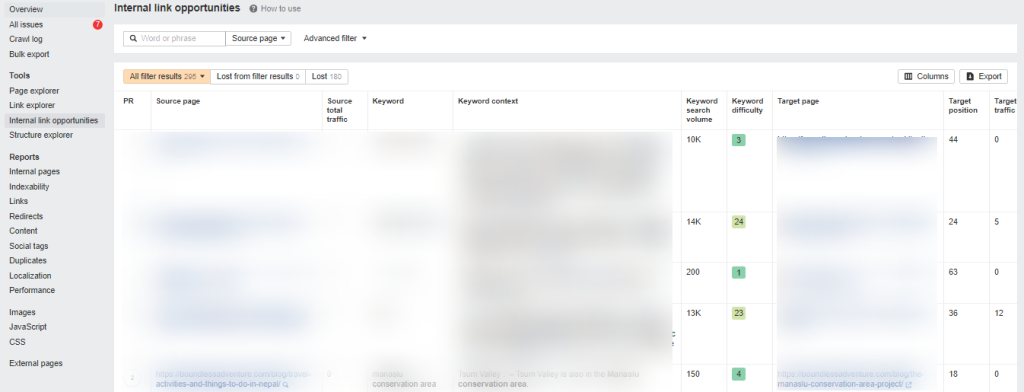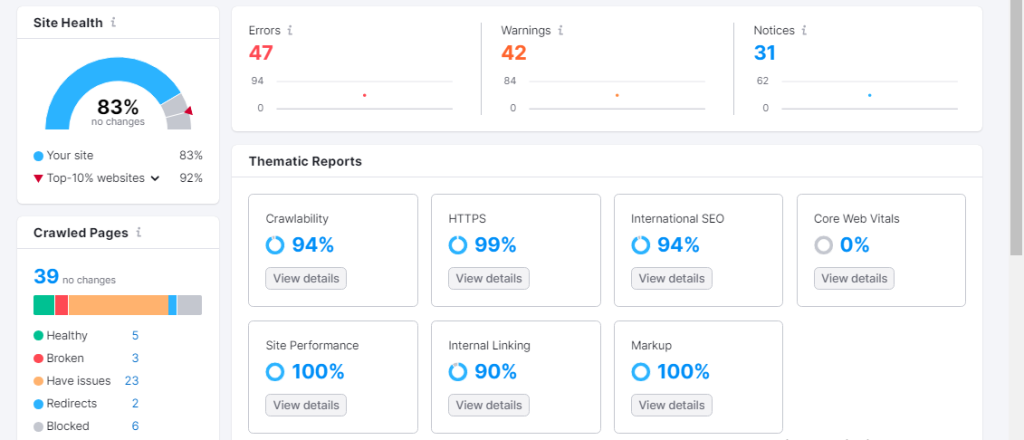Internal Links For SEO ! Best SEO Practices
Internal Links help your SEO practice in many ways, they help navigate, pass authority, and help search engines to know site structure. We’ll start from the basics about the internal links.
Table of Contents
We all know how much external links matter for ranking a page, likewise, the internal links give authority to another page. More Internal Links = More Priority, and vice versa, And that’s how search engines find the top priority pages on our website and help them rank.
What Are Internal Links?
Links that point to another page of the same website are known as internal links. They help users and search engines to navigate content that is co-related to each other. Here is an example of an internal link:
<a href="https://www.examplesite.com/">Meta Tags</a>But How Does This Help?
As the link provides valuable content inside the website, the user can find everything on our website, which will boost the credibility of our pillar page and search engines will find that the website has the courage to rank for a particular keyword tool.
Not only this, as users can find every information on your website, Why would Google rank other websites that don’t have every co-topic related to each other? That makes sense right
Best SEO Practices For Internal Linking
Here are three rules for internal linking:
- The anchor text of a link should satisfy the user intent rather than just a link.
- Use Keyword Wise Relevant Anchor Text For Linking
- Internal Links are best but if you find external links providing valuable content: link external ones
- Don’t Overdo! The less the internal link, the more link juice passes, and it gives clear architecture to the search engine. (Internal Link should be > 150 per page.)
Find Internal Linking Opportunity For SEO
Now, I will show you the step-by-step guide on the best internal linking strategy I use on most websites. I recommend using the Ahref internal linking tool to find out the internal linking opportunity. It is available on a free plan, too.
Go to Ahref Site Audit > Project > Internal Link Opportunity

Here, you’ll find the internal linking opportunity report; while there are many columns, export them in Google Sheets. Now, keep the following columns side by side.
(source page, keyword, keyword content, target page )
- Source Page: This URL is the source URL where the internal link opportunity is seen.
- Keyword: This is the Keyword with volume and isn’t linked to another.
- Keyword Content: This content is the paragraph where the Keyword is seen.
- Targeted Page: This URL is the target URL where the Keyword should be linked on the source page.
In the following simple step, the internal linking can be done, but remember the rules I told you before. The machine generates this link opportunity, so it can’t be 100% right, so verify all those and ask yourself whether the anchor text satisfies the user intent.
This Is My Approach to Fix the Internal link Issue
Broken Links Fix
They are a crucial part of internal links they can negatively impact our website SEO. User landing on a 404 page is not good. My approach will be to pass the 301 (Permanent) Redirection in those cases.
Find out Broken Internal Links and Fix Them
First of all, I have to find out the broken links through tools. You can use any spider frog, ahref, Semrush. My choice is to go to Semrush to find the broken link because that’s convenient.

Start the Site Audit > Internal Links > Broken Internal Links
Now, Redirect them to related or similar pages.
Orphan Pages Fix
Those Pages that exist on our website but haven’t gotten any links for the website are known as orphan pages and these are pages that are hard to crawl by bots and get indexed. There are two ways to fix these issues:
Again Same Procedure on Semrush
Site Audit > Internal Links > Orphans Pages
By Creating a Sitemap Page:
By creating the sitemap page (example.com/sitemap) we can list those pages on our page and hence the issue can be solved.
By Linking or Delete:
We can simply link them to other relevant pages and make sure those get indexed by search engines or if the pages aren’t important for the website: Remove them
No Follow Internal Links
The no-follow internal links help in navigating the users but not search engines. This denotes not passing authority and following the page. Doing this will backfire on our SEO strategy, it doesn’t have any harmful impact but also doesn’t have any positive impact.
You Can simply find this on the site audit and fix them accordingly.
No Follow Example:
<a href=”example.com” rel=”nofollow” > Meta Tage </a>While the following internal link doesn’t have any attribute.
Many Internal Links Caused Problem
Yes, you have heard it right, having hundreds and thousands of internal links will create problems. Most of the search engines have approximately 150 – 200 crawl limit per page and they might not crawl more. So it is better to keep the links less than 100 or 150 per page. If there are many, keep removing the useless ones.
If we keep on adding many links, this will not only dilute the authority but, keep only important links possible.
How Internal Links Help SEO? Benefits of Internal Link
We will explore the benefits of using internal links on websites. This can improve a website in many ways, as we previously discussed. Let’s dive in.
Helps in Topical Authority
One aspect of the topical authority is internal linking, as internal links pointing toward the pillar page boost the page’s source. Suppose I have a pillar page, “Best Cloud Kitchen in New York.” Creating sub-topics like “How cloud kitchen can be beneficial for business” & “7 ways to start the cloud kitchen” and linking them to our pillar page.
This helps in creating a topic cluster that helps in creating topical authority on certain topics.
Meanwhile, the pillar page should also link those sub-topics, and that’s how internal linking can help build the topical authority.
Helps Users to Navigation Properly
The internal links can help users to navigate properly inside the website. We have header and footer links. This helps users to understand the silo pages and silo structure of the website. Not only the user but also search engines to understand the architect of the website.
Helps in Crawling and Indexing
The crawling and indexing can be much faster and easier by applying the best internal linking strategy. Do you know why recent posts are kept at the bottom of the blog template?
Keeping the recent post at the bottom of every blog post helps google spiders to find and crawl the page as soon as possible.
